Fun Lockdown Activities: Easy Vegetables to Grow Indoors
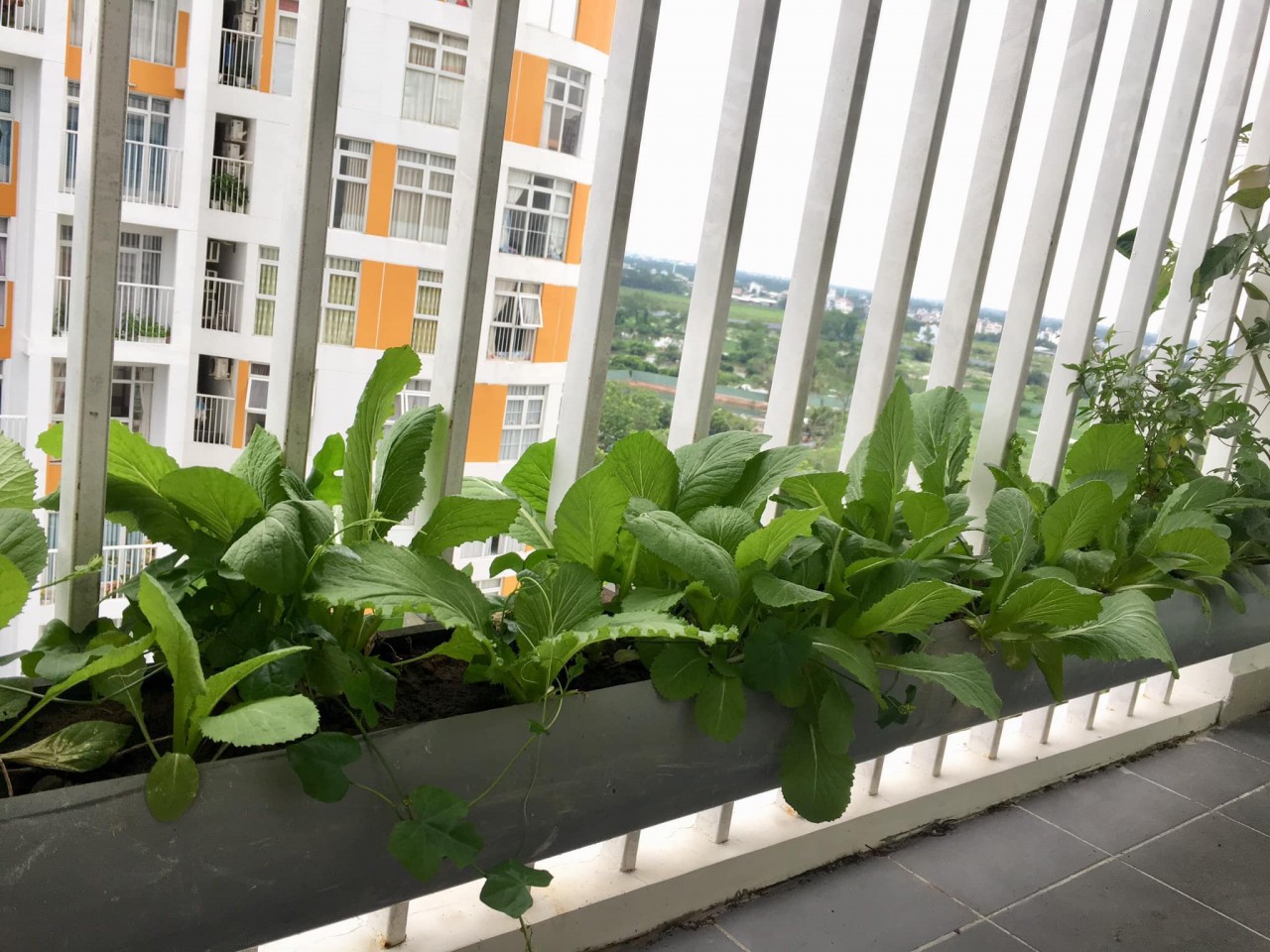 |
| Vegetables growing on an apartment balcony. Photo: Nguyễn My Trang |
Thanks to the Covid pandemic, everyone seems to be into home gardening to keep themselves occupied. If you’ve been thinking about it but aren’t sure how to start, we have some advice on unleashing your green thumbs in the comfort of your own home.
However, gardening indoors does have its challenges, including a lack of adequate light, pollinating insects, and wind. Plus, proper air circulation is vital for flooding the plant with carbon dioxide as well as pollinating any flowers. Also, you might have some houseplant pests to contend with.
There are a few tips to keep in mind if you're considering growing vegetables indoors.
-Possibly the most important factor to consider is the space available.
Different vegetables require different amounts of sunlight. Hence, recognizing the type of sunlight that comes through your home would allow you to make informed plant purchases.
Consider some type of supplemental lighting if your home doesn't offer enough natural light.
-Choose containers that have ample holes to allow for adequate drainage and are sized correctly for the particular vegetables/plants you're growing. Shallow and rooted greens may only need about a 2-inch depth, but deep-rooted tomatoes will need at least 12 inches of soil.
Use a good quality potting mix, not garden soil. Mixes dedicated to potting usually have vermiculite or perlite, which allow for better drainage.
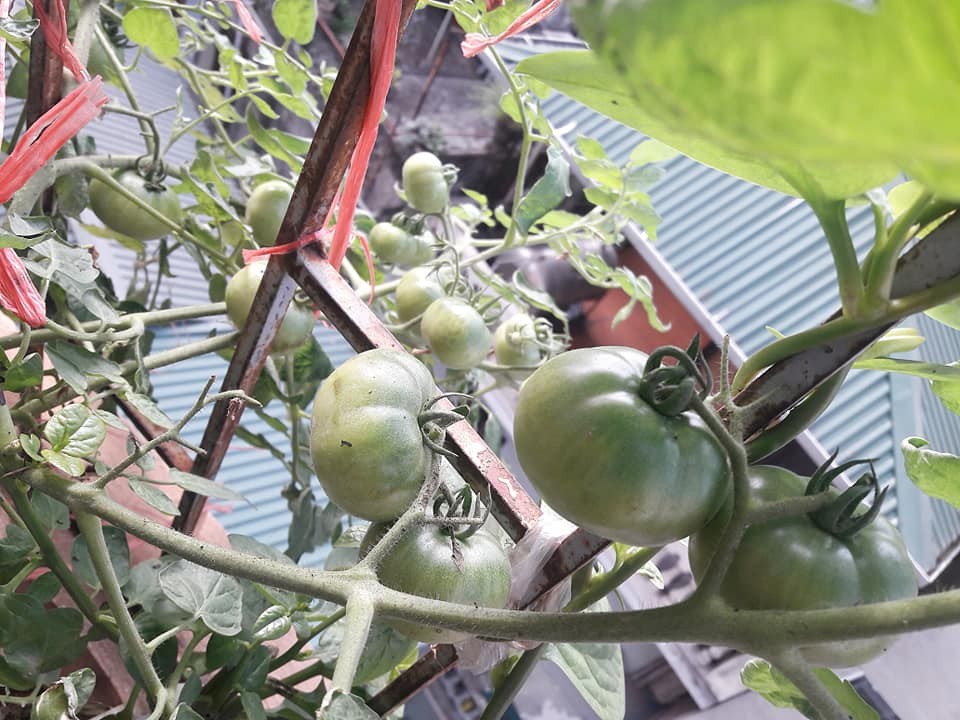 |
| Growing a full-size tomato plant in a container will require a large pot, a strong stake, or cage and lots of water. Photo: HD Pham |
-Decide on the right vegetables. Not everybody has naturally green fingers. Read up on plant care, and specific needs of different plants before purchasing them. Information is easily accessible on the Internet, such as on online gardening forums and groups, or through sellers.
-Having a home garden comes with actual expenses. For seeds, plants and fertilizers, prices usually start from around US$ 2 to US$ 30, depending on the kind one keeps, not to mention the tools and containers/pots.
Seeds are the lowest cost but if you don’t have a greenhouse or propagator and want a more instant result, plug plants are a good option.
Nevertheless, building a home garden does not necessarily have to be expensive. If you are on a budget, consider upcycling household materials such as milk/juice cartons, leftover metal/plastic cans or large foam containers (depending on your space) to cut costs.
You can make use of organic waste, including veggy peels and food leftovers, which can turn into compost.
Feces from earthworms fed on compost make a nutrient-rich breeding ground for clean veggies.
Here are some of the most easy vegetables for indoor gardening to start with.
Bean Sprouts
Growing bean sprouts can afford you the benefits of fresh produce in four or five days at any time of the year, in any climate, and requires neither sunlight nor soil. This technique produces large quantities of ready-to-eat organic produce, utilizing only clean water, and used milk or juice carton.
Start out by rinsing your beans and then allow them to soak in a bowl of water. After about 8 hours, drain the beans, which will have doubled in size, and reserve the liquid to use later in soup.
Rinse a used milk or juice carton clean. For milk carton, ensure the interior of the carton is not greasy.
Cut four top corners of the carton to create four small ventilation and drainage holes.
Feed the soaked beans through the sprout of the carton.
Screw back the cap and leave it in a dark cupboard away from sunlight.
In an interval of about 3 to 4 hours, soak the beans for about 10 minutes, then drain away the water, and return the carton to the cupboard. Repeat this soak-and-drain process for about 4 to 5 times daily. Minimum twice a day - morning and evening.
The bean sprouts grows quite fast, you will be able to feel the weight at the end of second day.
On the day of harvest, cut across the carton to pour out the grown bean sprouts.
Remove the husk and the long roots.
This method of growing provides an easy and effective method of sprouting a nutritious food.
Microgreens
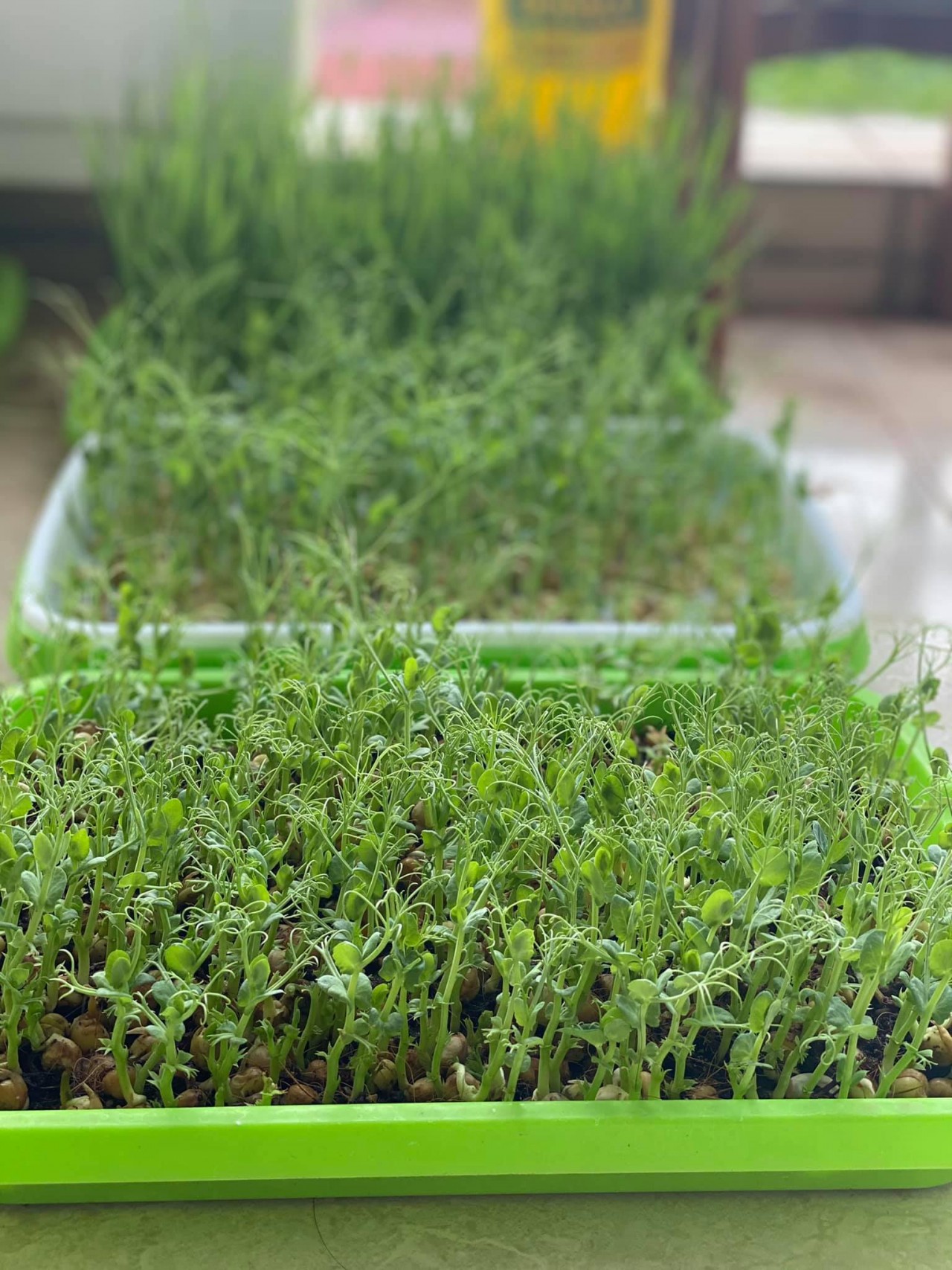 |
| Growing pea sprouts in plastic pots. |
Don't let their size fool you, microgreens are packed with 40 times more vitamins and nutrients than fully grown plants. You'll grow them the same way you would leafy salad greens, but you'll harvest them when they're just about 2-3 weeks old. Try adding them to sandwiches for a nutritious crunch. Typically, they're a mix of seeds from various greens and herbs, such as beets, radishes, kale, Swiss chard, and basil.
You can grow any lettuce, salad green, or herb as a microgreen. It's easy to start with a pre-packaged seed mix, and you can look for specific microgreen mixes, or simply choose a mesclun mix to grow as microgreens.
Do not let the soil dry out, and be sure to remove any weeds so that the tiny greens don't have to compete with them for water and nutrients. Since you'll be harvesting the greens so young, you don't need to fertilize them while they're growing.
Garlic
It is also possible to grow full garlic bulbs, though this can be tricky since they need lots of sunlight and it takes a long time to grow full bulbs. Garlic is a rather slow-growing plant that takes six months or more to grow from planted cloves to full bulbs that resemble the product you buy at the market.
If you've ever left a garlic bulb alone for a few weeks (or you've put garlic in the fridge), you may have noticed the clove sprouting a little green foot from one of its ends. Instead of tossing it, you can plant that sprouting garlic clove about an inch deep in a small container and water it. Within weeks, you'll have garlic greens.
Start harvesting when they grow to 8 to 10 inches long by cutting off just what you need and leaving the rest (you generally only get one flush of growth from each clove). They may sprout again, but the quality declines each time. So start new cloves when you begin harvesting the current crop.
Shallots
Like garlic cloves, they should be planted in the fall or early spring, and with their fast growth rate they are usually ready to harvest in 90 days on average.
Shallots are most commonly grown from cloves. Place each clove in the soil with the thick end pointing down and the top just above the soil line. Plant them around 6 inches apart in rows, and space each row around 12 inches apart. These plants do not need a support structure to grow on.
For best results, grow your shallots in full sun, meaning at least six hours of direct sunlight on most days. Shallots can also tolerate a bit of shade, but they might not be as robust.
Scallions
Scallions do just fine indoors. And you actually don’t even need seeds to get them started. You can plop a bunch of scallions in about an inch of water in a container. Some gardeners have even had success replanting the root end of scallions after using the tops.
When the roots have reached a couple inches long, move them to a shallow container of potting mix to continue growing. Harvest the green tops, leaving about an inch of the stem to regrow.
An increasing number of Vietnam's cities residents are also eager to turn any space possible in their homes into veggy beds. Here's photos shared online.
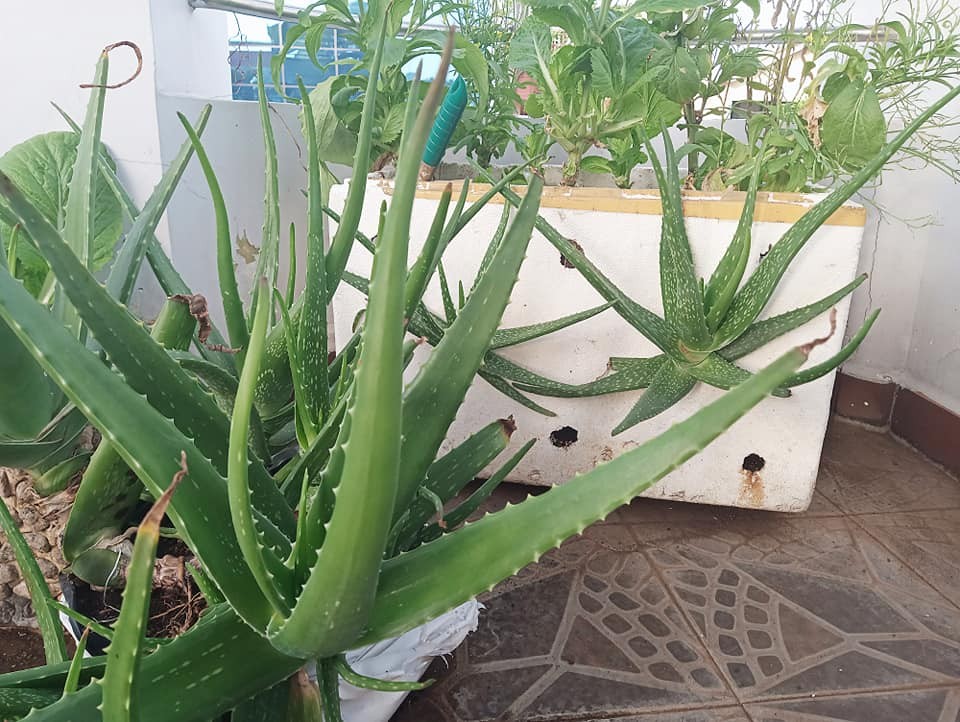 |
| Aloe vera growing in foam containers. Photo: HD Pham |
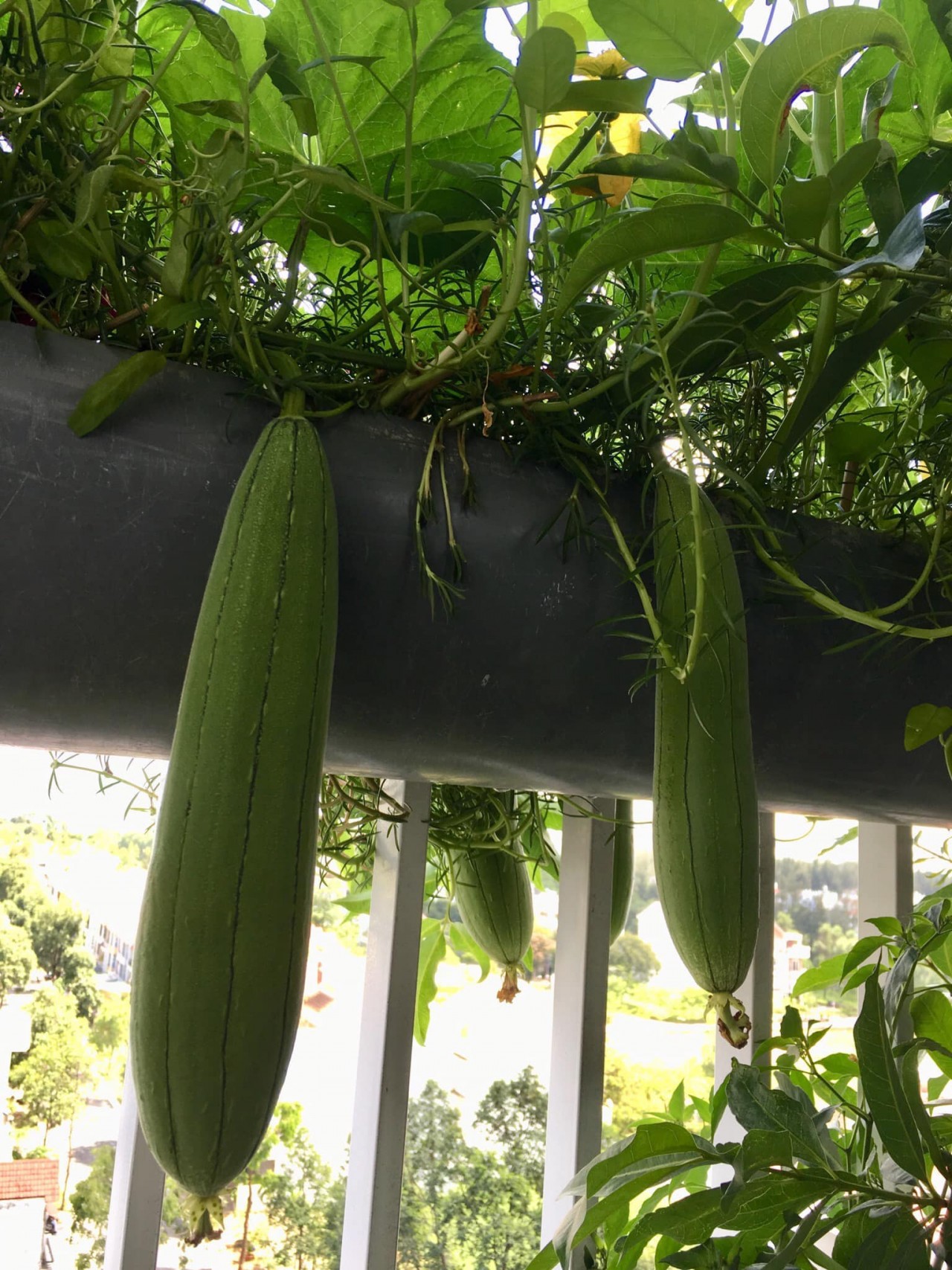 |
| Planting luffa ion an apartment balcony. Photo: Nguyễn My Trang |
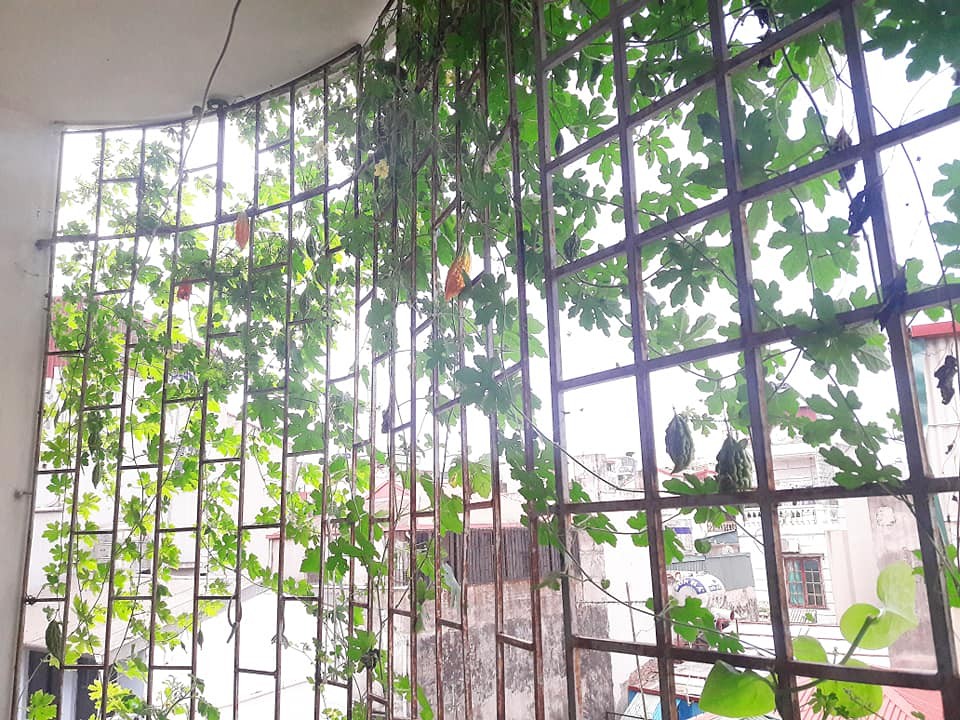 |
| Bitter melon. Photo: HD Pham |
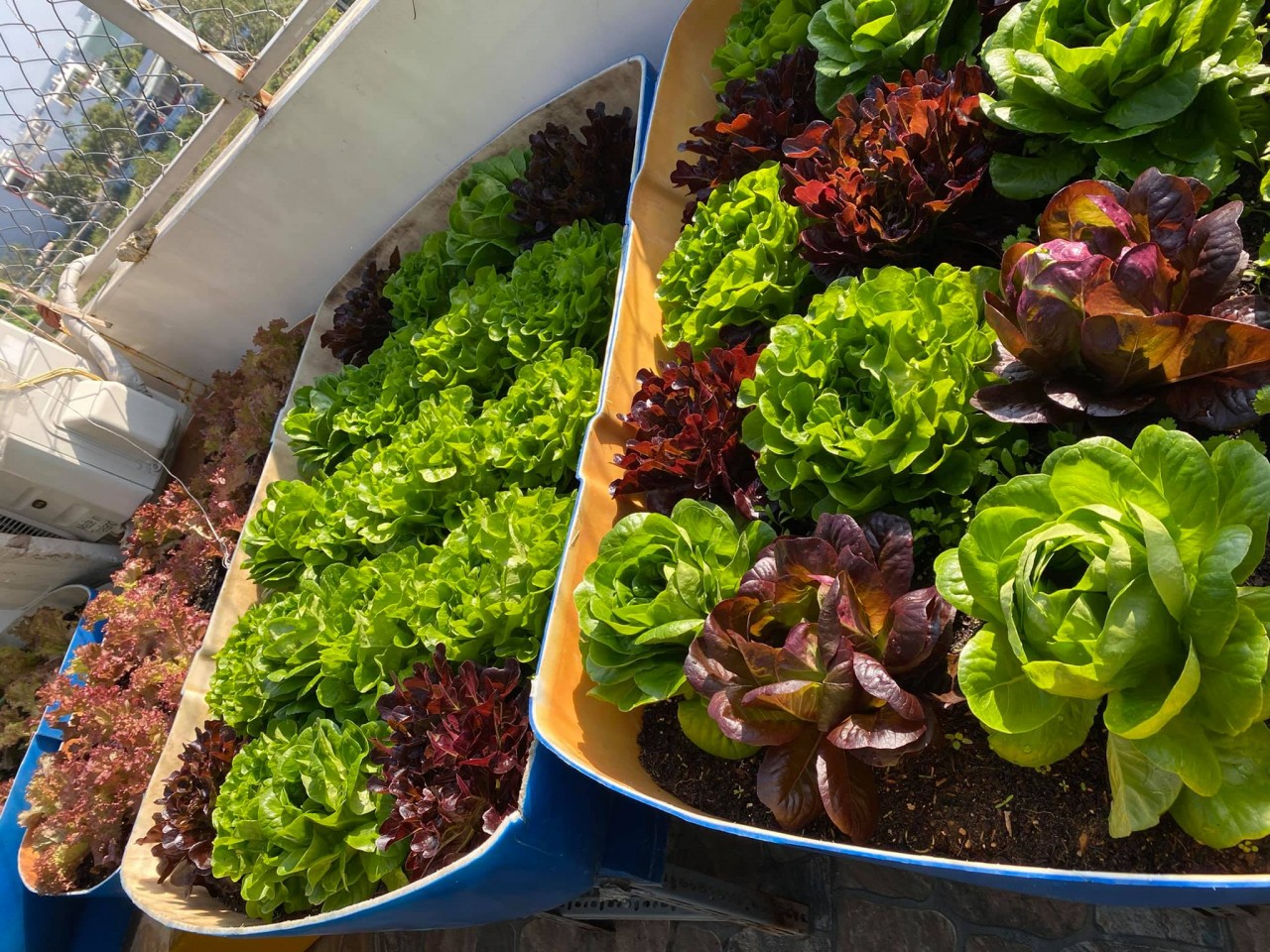 |
| Photo: Trúc Hòa |
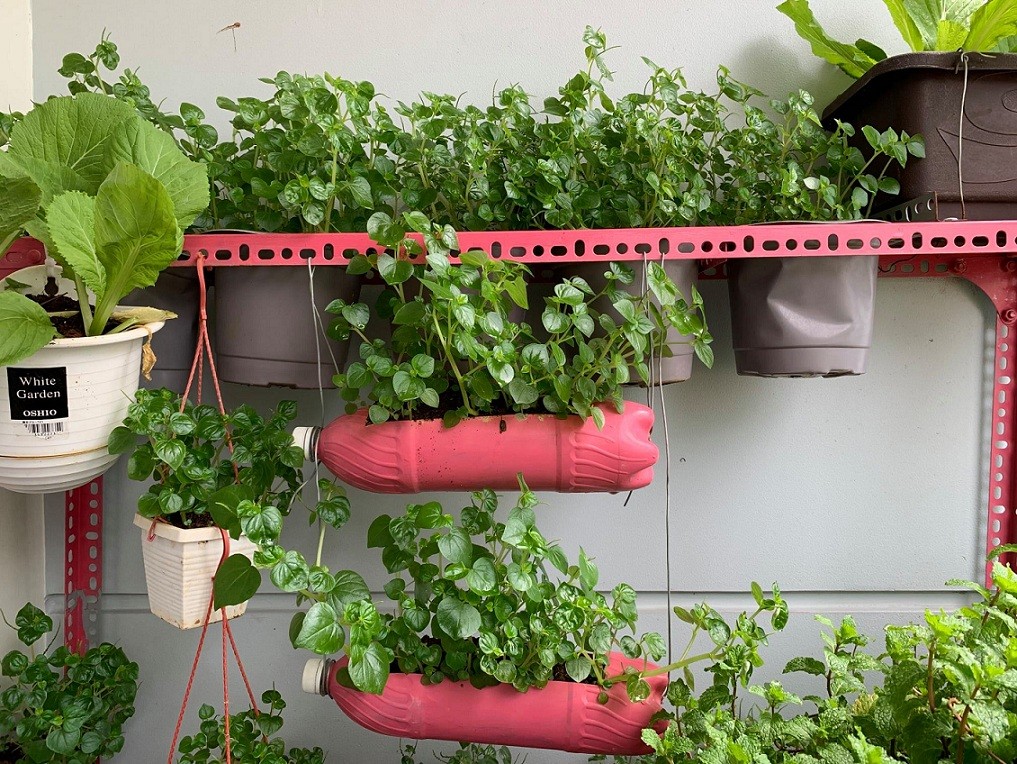 |
| Photo: Thủy Tiên |
| For your first try at indoor vegetable gardening, lettuces, microgreens, and herbs will most likely offer the best chance of success. Due to the high light and humidity requirements of vegetables like tomatoes and peppers, growing fruiting plants to harvest indoors can be time-consuming and will probably involve the cost of special equipment, such as extra lighting and, in the case of tomatoes, large pots. Moreover, there are a number of plants on the market grown as houseplants even if you do not have a garden plot but do have a patio, porch, or balcony with good sun exposure such as eggplants, cucumbers, peppers, carrots, tomatoes, even aloe vera. You can purchase soil specifically balanced for vegetable container gardening with slow-release fertilizer already mixed in online. |
 | Royal-themed Sticky Rice Cakes Make for a Regal Treat This coconut sticky rice "cake" was covered in a fondant-like bean paste with a figure model wearing ancient Vietnamese costume across the top. And the ... |
 | Lockdown Baking: Feast Your Eyes on These Amazing Mooncakes As the world continues to deal with the virus, this Asian treat offers comfort in this trying time. For one Saigonese girl, her painted mooncakes ... |
 | Lockdown Cooking: How To Make Pizza in a Frying Pan You can use all that's left in your fridge to make a delicious homemade pizza. |
Recommended
 Handbook
Handbook
Vietnamese Banh My Shines on Global Culinary Map
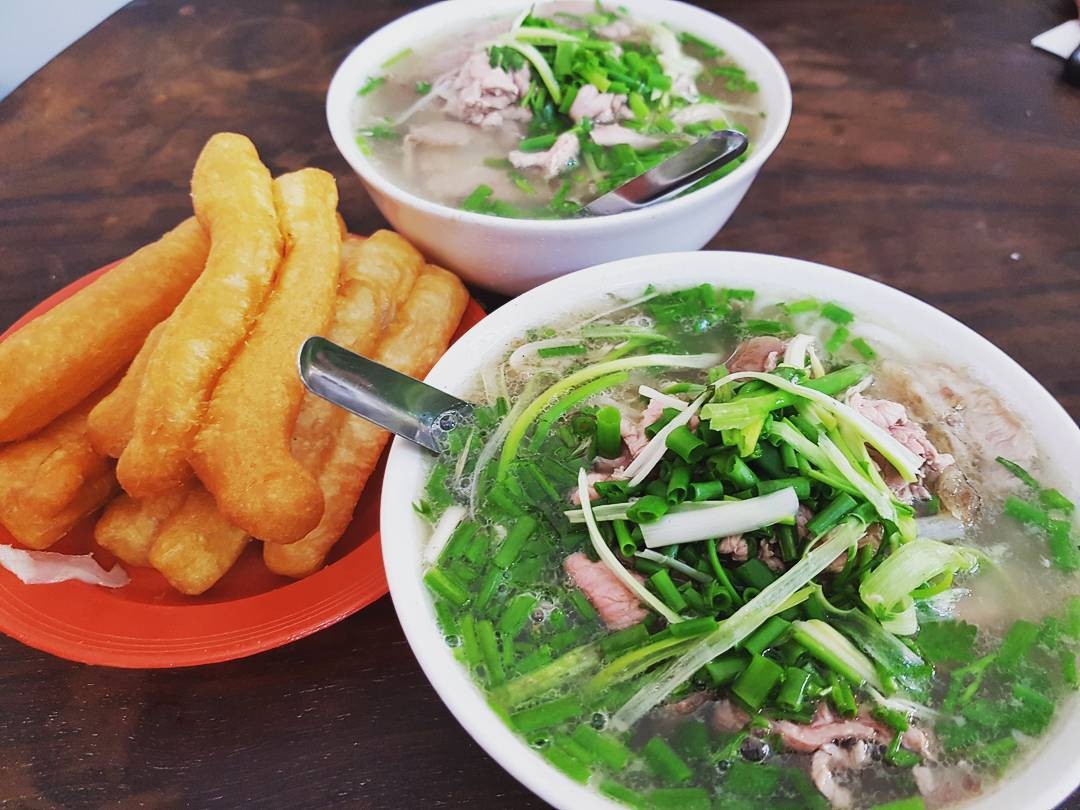 Handbook
Handbook
Vietnam Ranks Among World’s Top 4 Most Attractive Culinary Destinations
 Handbook
Handbook
Vietnam’s AI Law to Require User Notification before AI Interactions
 Handbook
Handbook
10 Vietnamese Films Set For Screening In US To Mark 30 Years Of Diplomatic Ties
Popular article
 Handbook
Handbook
Time Out: Hanoi Among Most Beautiful Autumn Viewing Spots in Asia
 Handbook
Handbook
Vietnamese Coffee Conquers Paris - More Than Just A Brew
 Handbook
Handbook
Belgium: Vietnamese Booth Leaves Strong Impression at ManiFiesta Festival 2025
 Handbook
Handbook










